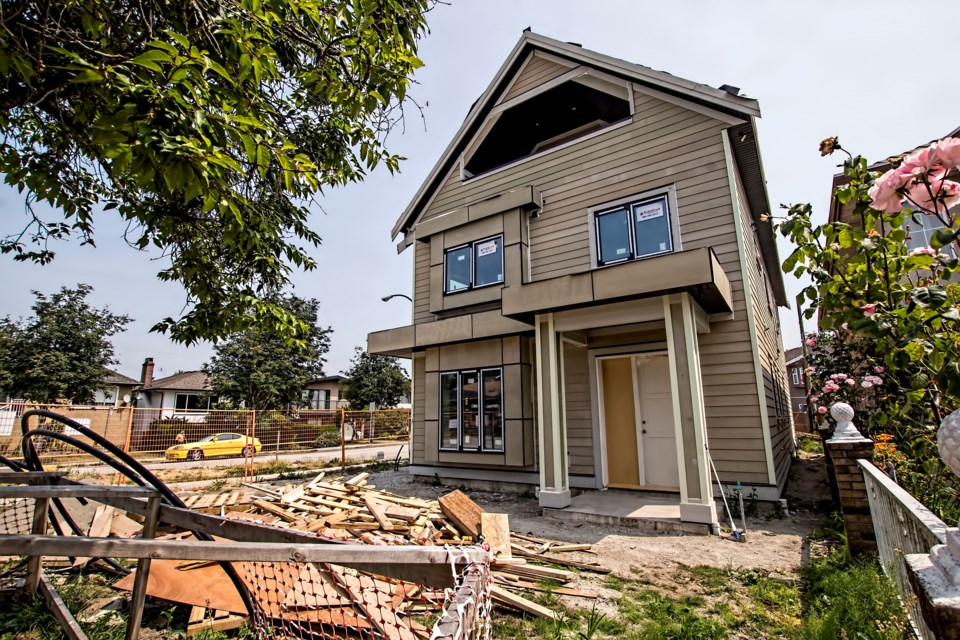A Vancouver city council initiative aimed at encouraging the development of more attainable housing – the so-called “missing middle” – will soon be getting some input from residents.
Council voted Wednesday (July 26) to move a motion to a public hearing, a necessary step before any changes to a zoning by-law can be approved.
Ron Rapp, CEO of the Homebuilders Association Vancouver (HAVAN), said prior to the vote that his organization hoped for changes to the initiative that would adjust zoning bylaws to promote the construction of multiple dwellings on residential lots.
He said other industry experts reached out to the council prior to their meeting to propose changes.
“The three things that we've identified as being of concern are the floor space ratio, the situation with hydro and … alignment with the province,” said Rapp.
“It's going to be a real gong show if the city proceeds unilaterally and then winds up being significantly offside compared to what the province is prepared to put on the table. That's just going to translate into delays, confusion and expense.”
Vancouver has a floor space ratio (FSR) requirement of 0.7 FSR with a maximum of 0.45 FSR for the portions of the house above the ground.
FSR refers to the ratio of the built area to the area of the plot on which the home is built.
This would translate into a 2,800-square-foot home on a typical 33-foot by 122-foot lot, according to Rapp.
However, the referral report heading to a public hearing proposes to reduce the FSR requirements to 0.6. This would allow for a 2,400-square-foot home.
“You're basically removing 400 square feet out of this equation and that 400 square feet is additionally going to negatively impact what you can do. You're left with the choice of either making four really small suites or you make three suites that are more of a realizable size,” he said.
“I understand that from staff, they're trying to disincentivize the idea of building large single-family homes … but there's still a demand for that and there still should be opportunity for that.”
The City of Vancouver said in a statement to Glacier Media that council directed staff to look into reducing the size of single-family homes as part of the “making home” motion approved in January 2022.
“The cost of new houses is out of reach for most households. Reducing the size of a new single-detached house is a way to discourage the replacement of houses with new larger houses and encourage other multi-unit options that are affordable to more households and provide more homes on a lot,” the city said.
When it comes to the impact on electrical infrastructure, Rapp voiced concerns as to whether BC Hydro has the capacity to support additional units. The answer would be to introduce pad-mounted transformers (PMT), a type of electrical transformer that sits on a pad of concrete on the ground, according to both Rapp and the City of Vancouver.
“Well, that immediately takes anywhere from 440-150 square feet out of the lot because you don't plunk down a transformer surrounded by a house. You have to allow for some clearances and service access,” he said.
Even with a PMT, a property owner can still build a single-family home to the maximum size and could add a laneway house at up to 0.25 FSR, according to the city’s statement.
The city said staff are “confident” the motion will fall in line with the province’s future legislation on missing middle housing that will be unveiled later this year.
Missing middle housing is a term that refers to housing types that could fall between the categories of a single-family home and a condominium tower.
The city did not indicate when the motion would be brought before a public hearing where individuals can voice their concerns or support for the motion. Council may adopt the motion, adopt it with amendments or reject the motion once it has passed through this stage.
The July 26 motion was automatically and unanimously approved along with all other referral reports presented during the July 25 council meeting. No adjustments to the motion were made and councillors did not discuss the report’s contents.
The next scheduled public hearing will be on September 12, according to the city’s website.




